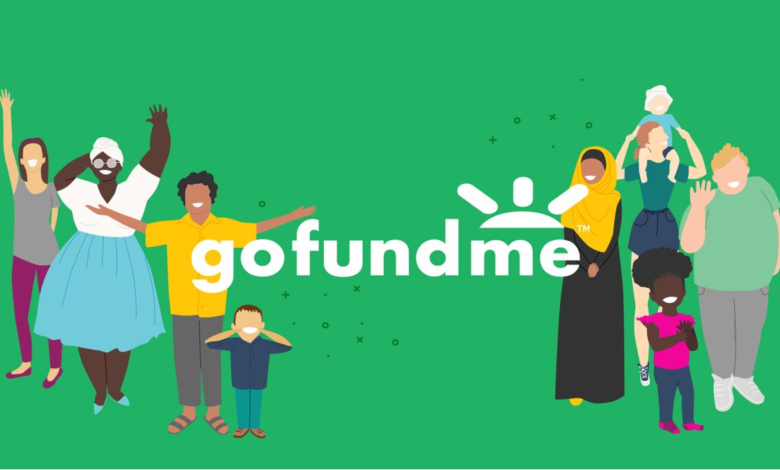GoFundMe for Medical Expenses: Navigating Costs and Coverage in 2024

Healthcare costs have always been a major concern for individuals and families, but in recent years, these costs have escalated to unprecedented levels. In 2024, the burden of medical expenses continues to be a significant challenge, prompting many to turn to alternative methods for financial assistance. One such method is crowdfunding, with GoFundMe emerging as a popular platform for raising money to cover medical bills. This article delves into the dynamics of GoFundMe campaigns for medical expenses, the challenges of healthcare costs and coverage, and practical tips for creating a successful campaign.
The Rising Cost of Healthcare
The cost of healthcare in the United States has been on a steady incline for decades. According to a report from the Centers for Medicare & Medicaid Services (CMS), national health expenditures are expected to reach $6.2 trillion by 2028. This upward trend is driven by various factors, including the aging population, advancements in medical technology, and the high cost of pharmaceuticals.
In 2024, individuals face out-of-pocket expenses that can quickly become overwhelming. Deductibles, copayments, and coinsurance contribute to the financial strain, even for those with health insurance. For the uninsured or underinsured, the situation is even more dire, often resulting in substantial medical debt. In this context, many turn to crowdfunding as a means of alleviating the financial burden.
GoFundMe: A Lifeline for Many
GoFundMe, a leading crowdfunding platform, has become a lifeline for individuals struggling with medical expenses. Since its inception in 2010, the platform has enabled millions of people to raise funds for a variety of causes, with medical campaigns being one of the most common categories. The premise is simple: individuals create a campaign, share their story, and solicit donations from friends, family, and the broader community.
The appeal of GoFundMe lies in its accessibility and ease of use. Campaigns can be set up quickly, and there are no upfront costs. GoFundMe deducts a small fee from each donation, but the majority of the funds go directly to the campaign organizer. This model has proven effective for many, providing a crucial source of financial support during times of medical crisis.
Challenges and Considerations
While GoFundMe can be an invaluable resource, it is not without its challenges. One of the primary concerns is the disparity in fundraising success. Research has shown that a small percentage of campaigns achieve their fundraising goals, while many fall short. Factors such as the size of the campaign organizer’s social network, the emotional appeal of the story, and the effectiveness of the campaign promotion all play a role in determining success.
Additionally, there are ethical and privacy considerations. Sharing personal medical information publicly can be uncomfortable and may have long-term implications. Campaign organizers must balance the need for transparency with the desire to maintain privacy.
Another critical issue is the reliance on crowdfunding as a substitute for systemic solutions to healthcare affordability. While GoFundMe can provide immediate relief, it does not address the underlying issues driving high medical costs. Long-term solutions require policy changes and improvements in healthcare coverage and affordability.
Navigating Healthcare Coverage in 2024
Understanding healthcare coverage is essential for managing medical expenses effectively. In 2024, several key aspects of health insurance and coverage impact individuals’ financial obligations:
- Health Insurance Marketplace: The Health Insurance Marketplace continues to be a vital resource for obtaining health coverage. During the open enrollment period, individuals can compare plans, determine eligibility for subsidies, and choose coverage that best meets their needs.
- Medicare and Medicaid: For eligible individuals, Medicare and Medicaid provide essential coverage. Medicare, primarily for those over 65, covers a range of medical services, while Medicaid offers coverage for low-income individuals and families.
- Employer-Sponsored Insurance: Many individuals receive health insurance through their employers. Understanding the specifics of employer-sponsored plans, including deductibles, copayments, and out-of-pocket maximums, is crucial for managing healthcare costs.
- Supplemental Insurance: Supplemental insurance plans, such as those for dental, vision, and prescription drugs, can help mitigate additional costs not covered by primary insurance. Evaluating the benefits and costs of supplemental plans is essential for comprehensive coverage.
- Health Savings Accounts (HSAs) and Flexible Spending Accounts (FSAs): HSAs and FSAs offer tax-advantaged ways to save for medical expenses. Understanding the rules and benefits of these accounts can provide additional financial support.
Creating a Successful GoFundMe Campaign
For those considering a GoFundMe campaign to cover medical expenses, several strategies can enhance the likelihood of success:
- Craft a Compelling Story: A well-written, heartfelt story is the foundation of a successful campaign. Clearly explain the medical condition, the associated costs, and the impact on your life. Authenticity and emotional appeal are key.
- Set a Realistic Goal: Research the expected medical costs and set a fundraising goal that reflects your needs. Be transparent about how the funds will be used, and update the goal if circumstances change.
- Use Visuals: High-quality photos and videos can significantly enhance your campaign. Visual content helps potential donors connect with your story on a personal level.
- Leverage Social Media: Share your campaign across social media platforms to reach a broader audience. Encourage friends and family to share the campaign, and use relevant hashtags to increase visibility.
- Provide Updates: Regularly update donors on your progress and any changes in your situation. Express gratitude for their support and demonstrate how their contributions are making a difference.
- Engage with Donors: Respond to comments and messages from donors. Building a sense of community and personal connection can encourage additional support.
The Future of Medical Crowdfunding
As healthcare costs continue to rise, the role of crowdfunding in addressing medical expenses is likely to grow. However, reliance on platforms like GoFundMe highlights the need for broader systemic changes. Policymakers and healthcare providers must work together to create more sustainable solutions that ensure affordable and accessible healthcare for all.
In the meantime, for those facing immediate financial challenges, GoFundMe offers a viable option to garner support from their community. By understanding the dynamics of healthcare coverage and employing effective crowdfunding strategies, individuals can navigate the complex landscape of medical expenses in 2024.
Conclusion
The journey to manage medical expenses in 2024 is fraught with challenges, but resources like GoFundMe provide a beacon of hope for many. While it is not a panacea, crowdfunding can offer critical financial support during times of medical crisis. By combining a thorough understanding of healthcare coverage with strategic campaign efforts, individuals can better navigate the financial hurdles posed by medical expenses, ultimately finding a path to relief and recovery.




